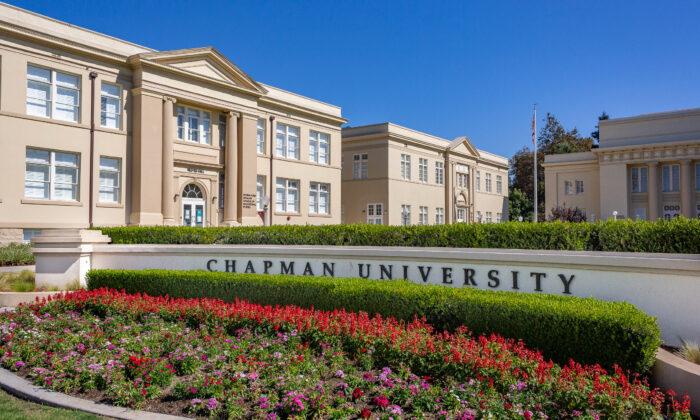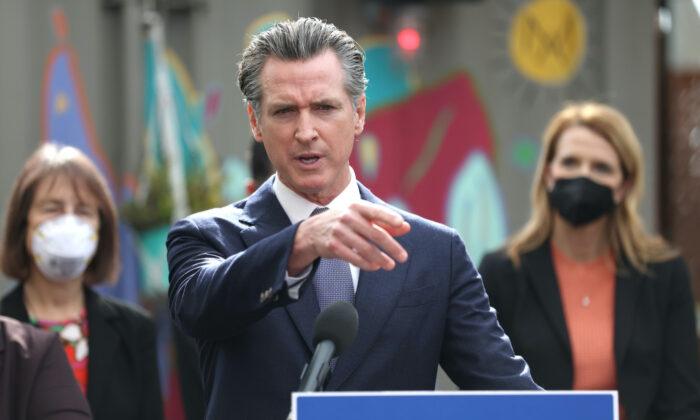Orange County health officials said an outbreak of COVID-19 that popped up around the campus of Chapman University in the city of Orange earlier this week has so far not spread beyond the California school’s community.
At an Oct. 15 press conference, county officials said the source of the spread appeared to be from off-campus social gatherings. A cluster of 37 cases of COVID-19 was first reported by Chapman University on Oct. 12.
Dr. Matt Zahn, medical director of the communicable disease control division of the Orange County Health Care Agency, confirmed that the cluster did not seem to be spreading in the local community.
“In this setting, we’ve seen really the same thing that we’ve seen in other events around the country in colleges and universities. It is outside-of-classroom social gatherings that have really been the source as opposed to inside classrooms,” Zahn said at the press conference.
In its weekly update, Chapman reported 17 active cases of COVID-19 in students living in dormitories on campus and another 19 cases in students living off campus in nearby housing. Another positive case was reported for a student whose living situation was unknown.
There are currently no active cases reported among faculty or staff members at the university.
Chapman President Daniele C. Struppa sent a letter to students indicating that six cases had been discovered in the K Residence Hall, adding that all students living in the facility would be tested to further contain the spread of the outbreak.
Zahn said the school “has really done an exemplary job of reaching out” to the county and those affected by the active cases.
“Chapman has an investigation team, and so what we rely on is the universities will reach out to the students and the staff who have been exposed that they’ve identified on campus,” he said.
“This is a collaboration between us and Chapman University, and so we’ll all be watching closely to see if we can identify additional cases.”
Chapman’s online COVID-19 dashboard—which is updated weekly—shows active cases only. When students or staff members recover, their cases are removed from the list.
The university plans to start in-person undergraduate classes on Oct. 19. Graduate students and faculty who chose to teach on campus returned on Oct. 5 as part of the school’s phased reopening schedule.
None of the students or faculty are required to return to campus, however, so online options will be available.
In preparation, the school implemented new safety protocols including signage, barriers, hand sanitizers, plexiglass shields, and entrance/exit instructions. It also installed UV [ultraviolet] sanitation lighting in the heating and air conditioning systems.
The university states that it follows Centers for Disease Control and Prevention (CDC) guidelines regarding quarantines. A person who tests positive for COVID-19 must quarantine for at least 10 days, and show no indication of fever without the use of fever-reducing medication for the last 24 hours before ending the isolation. Symptoms in general must also have improved, according to the school.
Infected students will be able to quarantine in campus housing. Anyone at risk of exposure will be notified.
Testing for all students is available at the Student Health Center on campus. If a student is tested elsewhere and confirmed positive for the disease, the school asks that he or she contact the health center for guidance.
“Chapman will make every effort to identify and isolate positive cases, contact trace, test, and quarantine all contacts,” says Chapman’s website. “All positive COVID-19 cases are immediately reported to the Orange County Health Care Agency (OCHCA).”
Since Orange County is now in the red tier in California’s color-coded COVID-19 monitoring system, classrooms are allowed no more than 25 percent of each room’s fire code capacity, according to the school.
Face coverings are also required, and campus activities will have virtual options.
Each staff member, faculty member, and student is expected to fill out and submit a daily health screening before arriving on campus.
No-contact temperature checkpoints will be set up at several locations. Those who receive a high temperature reading will be sent to Student Health Services.






Friends Read Free